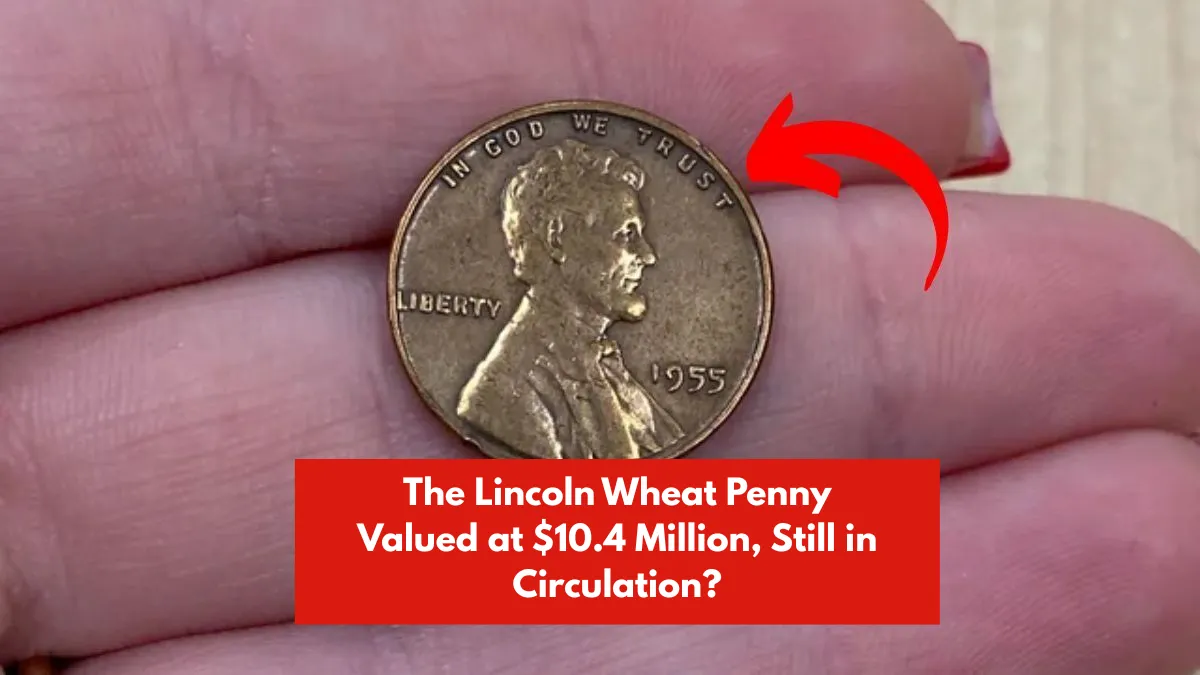You Might Be Holding a $10.4 Million Lincoln Wheat Penny—Here’s What to Know
Imagine reaching into your pocket and finding a penny that’s actually worth $10.4 million. Sounds crazy, right? But it’s true—one very rare Lincoln Wheat Penny has sold for that jaw-dropping amount, and experts believe a few of these valuable coins might still be out there in regular circulation. It’s a wild thought that a simple coin could change someone’s life overnight, and it has collectors and everyday people alike checking their spare change more carefully than ever.
A Quick Look at the Lincoln Wheat Penny
The Lincoln Wheat Penny is one of America’s most iconic coins. It was minted from 1909 to 1958 and was the first U.S. coin to feature a real person—President Abraham Lincoln—on the front. The back of the coin shows two wheat stalks and the words “ONE CENT,” a nod to the nation’s farming roots. The coin was designed by Victor David Brenner, and early versions even feature his initials, “VDB,” which are now considered collectible.
From Spare Change to a Multi-Million Dollar Coin
Most Lincoln Wheat Pennies aren’t worth much more than a few cents. But some rare versions have skyrocketed in value. One in particular—a penny that sold for $10.4 million—shattered records. This kind of value usually comes from a mix of historical importance, rare mistakes during production, and strong demand from collectors. These factors combined make a simple copper penny one of the most prized coins in U.S. history.
The Famous 1943 Bronze Penny
During World War II, the U.S. Mint needed copper for the war effort, so they made 1943 pennies out of steel coated with zinc. But a few bronze blanks from 1942 accidentally got used in 1943, creating one of the rarest coins in existence. These bronze 1943 pennies are incredibly hard to find and can sell for millions of dollars.
Other Rare Lincoln Wheat Pennies to Know
While the 1943 bronze penny gets the most attention, there are several other rare and valuable Lincoln Wheat Pennies, including:
- 1909-S VDB: Minted in San Francisco with designer Brenner’s initials, but pulled early due to complaints.
- 1914-D: From the Denver Mint, this penny is valuable due to low mintage.
- 1922 “Plain” Penny: Missing its mint mark, making it a rare error coin.
- 1931-S: Produced in small numbers during the Great Depression.
How to Spot a Valuable Lincoln Wheat Penny
To find a hidden treasure in your change, here’s what to look for:
- Check the Date: Focus on coins from 1909, 1914, 1922, 1931, and especially 1943.
- Look for Mint Marks: Small letters under the date like “S” (San Francisco) or “D” (Denver) can raise value.
- Do a Magnet Test: Steel 1943 pennies stick to magnets. Bronze ones don’t—those are the valuable ones!
- Search for Mistakes: Doubled images, off-center designs, or missing letters can also mean big value.
Where You Might Still Find One
You don’t have to be a professional collector to stumble upon one of these rare pennies. People have found them in:
- Loose change
- Old coin jars
- Bank rolls of pennies
- Garage sales
- Estate sales
- Flea markets
If you come across old coins, don’t dismiss them—they could be worth much more than face value.
What to Do If You Think You Found a Rare Penny
Think you’ve hit the jackpot? Don’t clean the coin—it can ruin its value. Instead:
- Store it in a soft, non-plastic (non-PVC) coin holder.
- Avoid touching it with bare hands.
- Contact a professional coin grading service for an expert evaluation.
- If it’s valuable, consider selling through an auction house or a trustworthy coin dealer.
Why Coin Collecting Still Captures Our Imagination
The idea of finding a rare, life-changing coin in your pocket speaks to our love of surprises and the thrill of the hunt. Unlike fine art or rare antiques that stay behind locked doors, coins move through the world in everyday hands. That’s part of what makes coin collecting so exciting—anyone, anywhere, could get lucky.
So next time you get change, take a second look. That ordinary penny might not be so ordinary after all.
Disclaimer
This article is for informational purposes only and not meant as financial advice. Coin values depend on market trends and official grading. If you think you’ve found a rare coin, consult with a certified numismatist or professional coin grader.
FAQs
1. What is the most valuable Lincoln Wheat Penny ever found?
The most valuable Lincoln Wheat Penny known to date is a 1943 bronze penny that sold for $10.4 million.
2. How can I tell if my 1943 penny is bronze or steel?
Use a magnet! Steel pennies will stick to it. Bronze ones won’t—and those are the rare ones worth big money.
3. Are all Wheat Pennies valuable?
No. Most are worth only a few cents, but rare dates, mint marks, and errors can make some worth thousands—or even millions.
4. Can I find valuable coins in everyday change?
Yes! Rare coins have been found in circulation, especially in old jars, bank rolls, or change from cash transactions.
